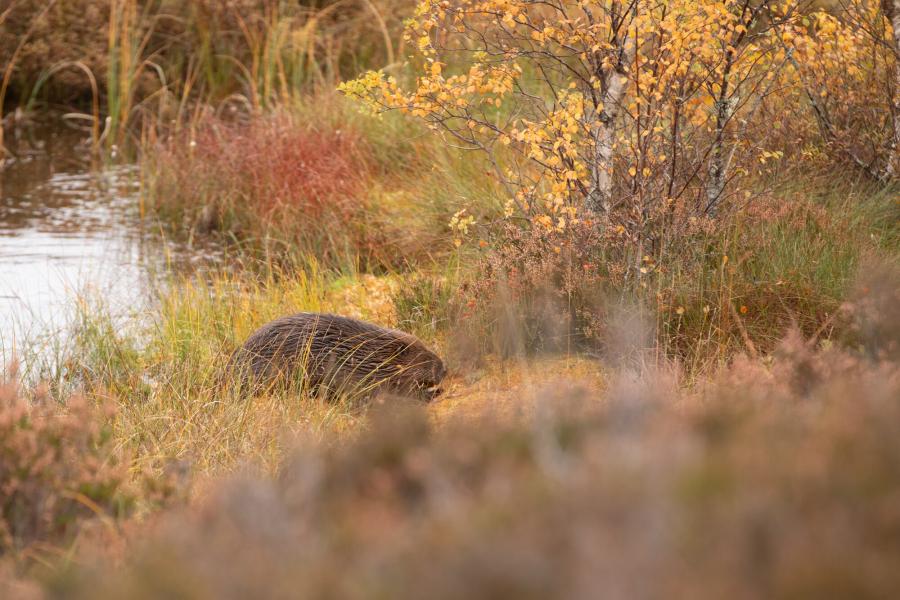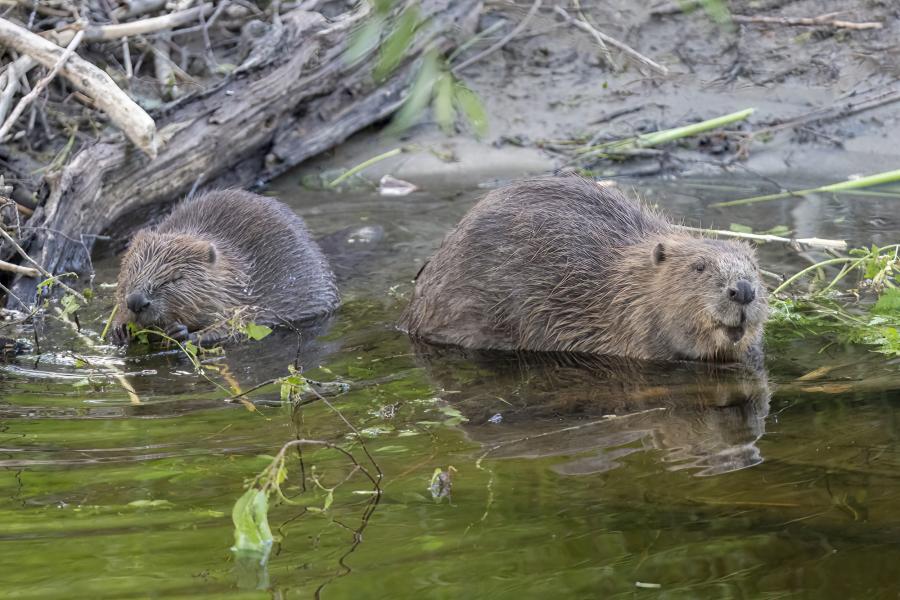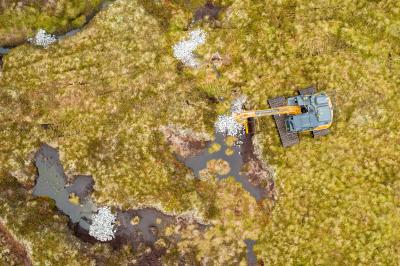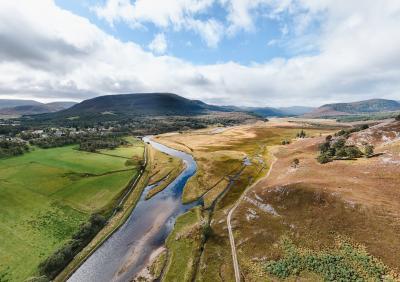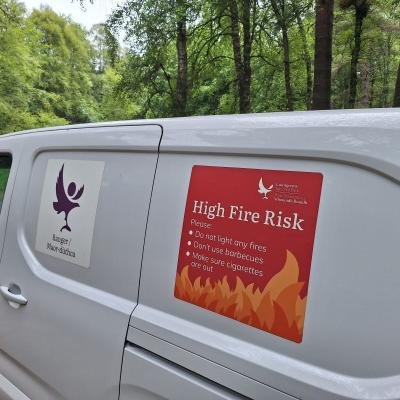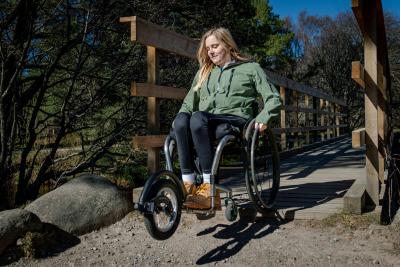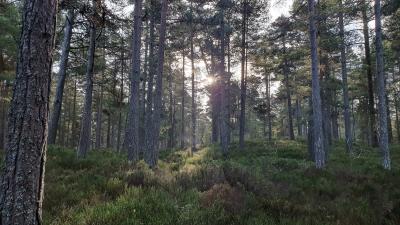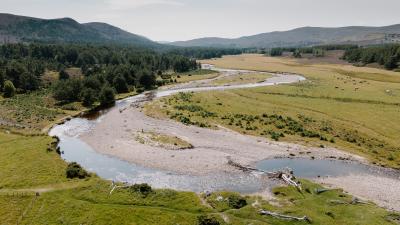Bringing beavers back to the Cairngorms
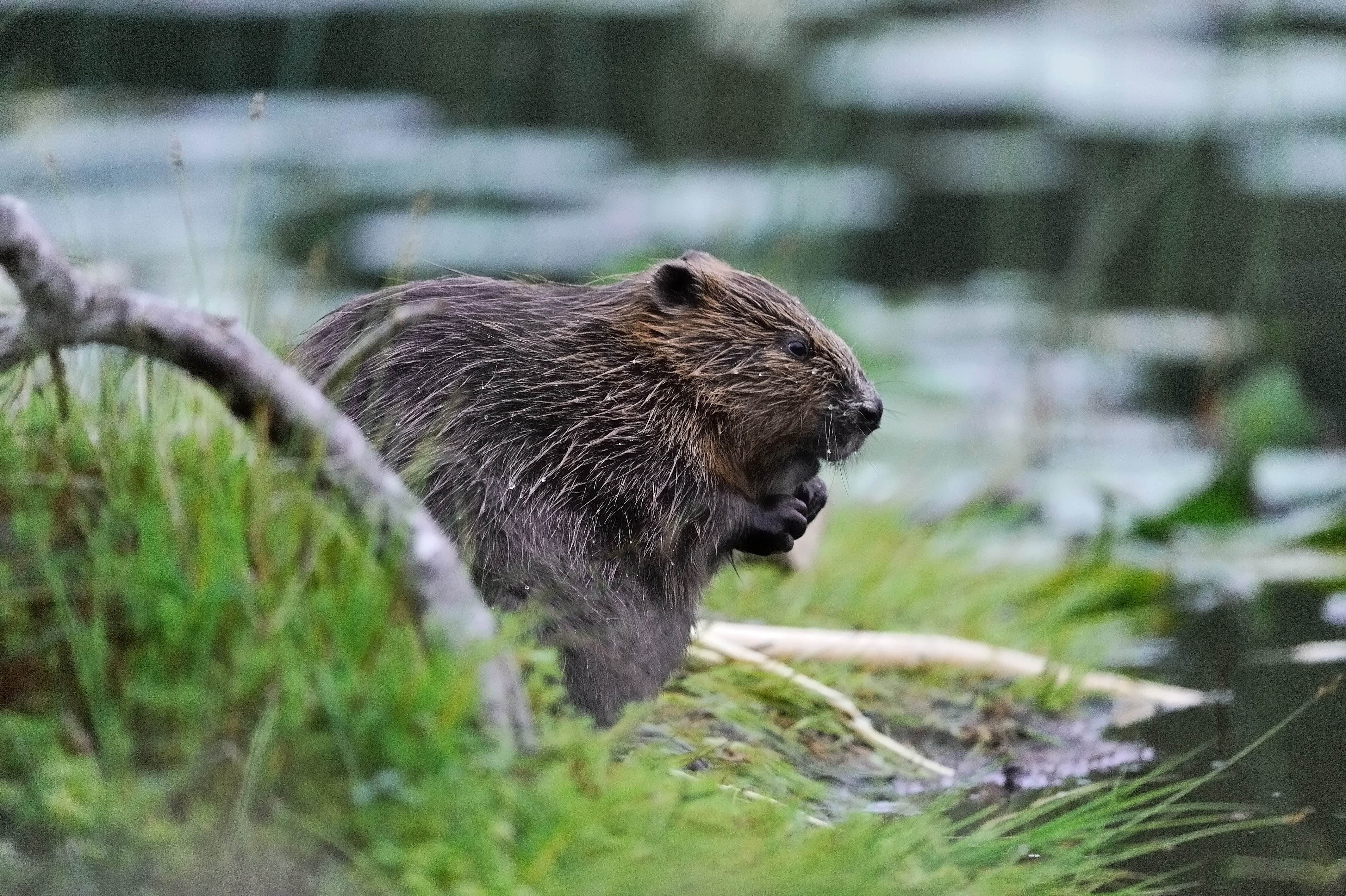
Beavers are widely known as nature’s engineers because of their remarkable ability to change the environment around them, offering benefits for nature and people alike.
In 2023, following months of engagement with landowners, communities and partners, the Cairngorms National Park Authority led on the first licenced wild release of beavers to an area where there were none, a first in the UK. (Note - there were two other wild releases in Scotland before us, but they had beavers nearby). This was a landmark moment in conservation, and a positive step forward for ecological restoration in the National Park.
Discussions about the return of beavers to the Cairngorms started in 2017, with the formation of the Cairngorms Beaver Group, which included representatives from farming and fishing industries, as well as nature conservation organisations. Recognising the rapidly changing policy landscape, this group began considering the varied impacts that beavers might have, should they return to a landscape they had been missing from for more than 400 years.
In 2019, beavers were formally recognised as a European Protected Species by the Scottish Government, and allowed to expand naturally within their current range, but in 2021 there was a change in policy to actively promote planned translocations (moving beavers in pairs or families) to new catchments. In light of this, the Park Authority commissioned a study from experts at the Beaver Trust which explored how likely it would be that beavers would arrive to the Cairngorms National Park through natural migration, information around whether the National Park had suitable habitats for these creatures, and potential benefits and implications for the National Park. The study showed it was unlikely that beavers would expand their range here in the short term and identified an abundance of suitable beaver habitat making the Cairngorms a potential area for reintroduction of the species.
In 2022 the Park Authority board agreed that the Park Authority would take the lead on reintroducing beavers to the Cairngorms, coordinating and facilitating the process with a range of partners and key stakeholders.
Following a period of extensive community engagement, the Park Authority applied for a licence from NatureScot which was granted in December 2023, allowing for the release of 15 pairs of beavers over a five year period. The first pair of beavers were released into Lochan Mor (Lily Loch) on Rothiemurchus in December 2023, with subsequent releases at sites owned by the RSPB and Forestry and Land Scotland, Wildland Cairngorm and a private landowner.
2009 - Beavers are reintroduced to Scotland in Knapdale, mid-Argyll by Scottish Beaver Trial partners the Scottish Wildlife Trust, Royal Zoological Society of Scotland, Forestry and Land Scotland and NatureScot.
2012 - The Tayside Beaver Study Group is created in response to a decision by The Scottish Government to tolerate an unlicensed beaver population on Tayside. The Tayside population was allowed to remain in place for the remainder of the Scottish Beaver Trial so the two populations could be studied side-by-side.
2015 - Final reports are prepared for Scottish Government on the Scottish Beaver Trial and the results of the Tayside Beaver Study Group’s activities. These reports would help inform a decision on the long-term future of the species in Scotland.
2016 - Scottish Government announced in November 2016 that beavers would remain in Scotland.
2017 - The Park Authority set up a Cairngorms Beaver Group, made up of representatives from the land management, fisheries, public and third sectors.
2019 - Beavers are formally recognised as a European Protected Species by the Scottish Government, allowed to expand naturally within their current range.
2021 - The Scottish Government announced a change in policy, actively promoting translocation (ie carefully moving animals from one location to another) to support the expansion of the beaver population into new catchments.
2021 - The Park Authority commissioned a Beaver Trust study on the likelihood of beavers arriving to the Cairngorms National Park naturally, together with the identification of potential benefits, implications and habitat suitability.
2022 - Minister for Green Skills, Circular Economy and Biodiversity, Lorna Slater MSP, set out Scottish Government’s clear ambition for beavers to be translocated to the Cairngorms National Park by 2024.
2022 - In June, the Park Authority board agreed that the Park Authority would take the lead on reintroducing beavers to the Cairngorms, coordinating and facilitating the process with a range of partners and key stakeholders.
2022 - In August, the National Park Partnership Plan was published, this outlines our commitment to facilitate beaver translocation to the Cairngorms National Park by 2027.
2022 - In September, NatureScot published the National Beaver Strategy 2022-2025, engaging over 50 different stakeholders to help shape a vision for the future of the species in Scotland. A series of Beaver Blethers formed the main engagement work.
2023 - In February, the Park Authority recruited a full-time Beaver Project Manager to work with partners to bring beavers back to the Cairngorms.
2023 - In October 2023 the application for a beaver release licence for the upper Spey Catchment was submitted to NatureScot.
2023 - December 6 the licence was granted allowing the release of 15 pairs of beavers over a 5 year period starting in the winter of 2023/24.
2023 - December 18 The first pair of beavers were released into the Lily Loch on Rothiemurchus by Lorna Slater MSP, Minister for Green Skills, Circular Economy and Biodiversity.
2024 - January to March further releases took place on Wildland Cairngorms and RSPB Insh Marshes, bringing the total to six pairs.
2024 - July, the first wild beaver kit born in the Cairngorms National Park for 400+ years was seen on camera.
2024 - October - December year two releases took place on WildLand Limited, on private land between Kingussie and Aviemore and amongst the quieter bays and lochans of the southern shores of Loch Morlich on land owned by Forestry and Land Scotland.
2025 - Year three sites are being scoped for releases in the autumn. At least five beaver kits are born at two separate sites in the Cairngorms.
Beavers can have enormous environmental benefits, but their activity can have localised negative impacts, and so as part of our work reintroducing the species we developed a bespoke monitoring and mitigation plan. Much of this work involves proactive monitoring, including checking for habitat changes, and it also involves responding quickly in collaboration with landowners where beaver activity may have negative consequences, for example tree wrapping to protect trees from being gnawed.
The Park Authority is committed to supporting land managers in living alongside beavers. As the licence applicant we will provide additional resource and be the primary point of contact for mitigation and management in the National Park. The additional support being offered to businesses, landowners and the general public within the Park includes:
- Single, named point of contact within the Park Authority, the Beaver Project Manager
- Access to additional staff and volunteers to undertake monitoring
- Regular monitoring undertaken to detect the range and spread of beavers within the National Park boundary
- Dialogue with landowners / managers and the public the Park Authority to identify and map areas of high-impact
- Continued development of the list of potentially high-impact sites
- Extensive proactive monitoring will be undertaken on high-impact sites when beaver presence is detected
- Landowners / managers contacted when beaver signs are detected on their land
- Quick responses to requests for site visits
- The Park Authority will offer to make, on behalf of the landowner / manager, any European Protected Species licence application that is required for mitigation works
- Additional budget provided by the Park Authority, as the licence applicant, to fund small-scale mitigation activities and remedial works not covered by the national mitigation scheme, to be agreed between the landowner / manager and the Park Authority on a case-by-case basis
A full description of the mitigation options and Park Authority support available can be found by clicking here
You can read the beaver impact summary by clicking here
A letter to the Spey Crofters and Farmers group from Grant Moir, CEO of Cairngorms National Park Authority, can be found by clicking here
In 2023 beavers hadn’t been present in the National Park for more than 400 years. Fast-forward to 2025, and there are juveniles ready to find mates of their own, kits expected in several locations, and the tell-tale signs of nibbled sticks are being spotted by locals and visitors near lochs and along one of our most iconic rivers. As time passes, we’ll be sharing news of the latest releases, monitoring and sharing the impact of beavers returning to the landscape, so stay tuned for updates!
More information
If you would like to find out more about living alongside beavers and how the Park Authority can help, get in touch with Jonathan Willet, Beaver Project Manager at [email protected].
Supporting documents
-
Date
2023 - 2028
-
Location
National Park-wide
-
Partnership plan objectives
-
Partners






